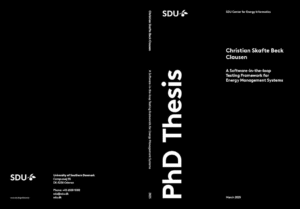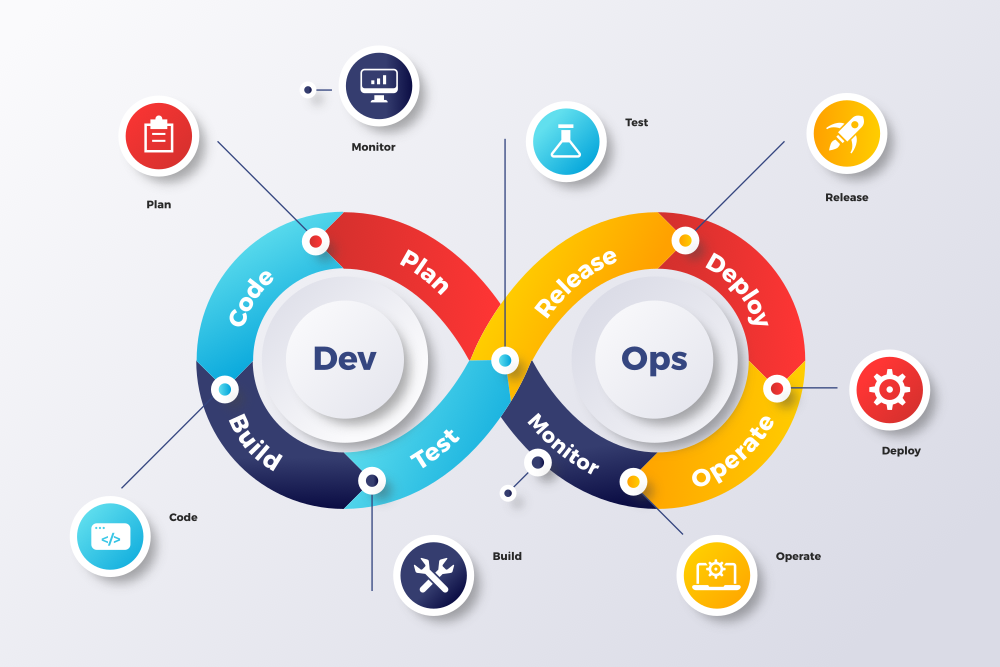Most recent publications are listed first.
2025

Bridging Rapid Simulation and Real-Time Execution: A Software-in-the-Loop Testing Platform for OCPP-Based EV Charging Station Management Systems
Christian Skafte Beck Clausen, Bo Nørregaard Jørgensen, Zheng Grace Ma
Energy Informatics Conference 2025
— Nominated Best Paper —
Electric vehicle (EV) charging management systems require scalable and standards-compliant coordination across distributed infrastructures. However, current testing approaches often lack the flexibility to support both accelerated development workflows and high-fidelity real-time validation. This paper presents a dual-mode Software-in-the-Loop (SiL) testing platform for validating EV Charging Station Management Systems (CSMSs) that communicate using the Open Charge Point Protocol (OCPP) 2.0.1. The platform enables the same CSMS software to be evaluated across discrete-time and wall-clock-time modes without modification, supporting rapid scenario testing and protocol-accurate verification. A case study involving 126 home charging stations in Denmark evaluates two smart charging strategies under real-world electricity pricing and demand conditions. Results show that discrete-time testing enables rapid performance evaluation, while wall-clock execution maintains protocol fidelity with minimal time drift. The platform offers a robust and reusable method for validating EV charging software and can support future applications involving distributed energy resources (DERs), smart grids, and cyber-physical energy systems.

A Software-in-the-loop Testing Framework for Energy Management Systems
Christian Skafte Beck Clausen
University of Southern Denmark
The global energy demand is increasing due to population growth, economic expansion, and sectoral electrification. To achieve sustainability, the energy sector is undergoing a digital transformation, integrating technologies like energy management systems (EMSs), renewable energy, smart charging, and demand-response applications. These innovations optimize energy resource utilization, enhance flexibility, and maintain grid stability.
Despite EMSs playing a crucial role in managing interdependent energy systems, their integration poses significant challenges. Software-in-the-Loop (SiL) testing is an established testing method for cyber-physical applications but is underutilized in the energy sector due to a lack of domain-specific research on SiL testing frameworks and methodologies. Furthermore, existing SiL applications focus less on system integration across multiple EMSs and standard protocols, risking system failures and cascading errors when later deployed in a real-world environment.
This thesis introduces a SiL testing framework that provides a structured methodology, reusable software patterns and guidelines for building SiL testing environments for EMSs. By facilitating iterative refinement and gradual transition towards subsequent in-the-loop testing phases, this framework suggests designs to bridge the gap between validation (discrete test environments) and verification (soft real-time test environments). Adopting early-stage SiL testing with the real EMS software decreases the risk of accumulating errors and instead increases certainty and confidence in the EMS’s performance throughout the entire development and testing processes.
This thesis applies the Constructive Research Method to systematically develop and evaluate a novel SiL testing framework for EMSs. The SiL framework is developed through the synthesis of domain-specific insights, problems, and results captured from three distinct case studies. Each case study is structured to address specific objectives that reflect different aspects of SiL testing, providing empirical evidence to validate the SiL framework’s generality, variability and utility.
The case studies focus on developing SiL testing platforms in three distinct application domains to enhance the generality of the SiL testing framework:
(i) Charging Station Management Systems based on the Open Charge Point Protocol (OCPP) standard.
(ii) Economic Emission Dispatch in Industrial Greenhouse Compartments.
(iii) Renewable Energy Systems, specifically Residential Photovoltaic Systems.
This thesis advances the existing literature with the contribution of a SiL testing framework that defines a structured methodology, high-level requirements, and a pattern system for solving common SiL testing problems in EMSs. The framework integrates a methodological approach with implementation guidelines designed to bridge the gap between validation and verification environments. By addressing key limitations in current SiL practices, this contribution facilitates the broader adoption, practical application and future development of SiL testing in the energy sector with the goal of enhancing the reliability of future energy systems.

Challenges in Transitioning from Co-Simulation to Practical Application: A Case Study on Economic Emission Dispatch in a Greenhouse Compartment
Christian Skafte Beck Clausen, Bo Nørregaard Jørgensen, Zheng Grace Ma
Energy Informatics Conference 2024
Co-simulation is a widely applied method used to analyze the behavior of complex, interdisciplinary, and integrated cyber-physical control systems. Despite its prevalence, the transition from co-simulated control systems into practical applications is not discussed as much in the literature. This leaves a gap in the literature because practitioners may not be aware of these challenges. This paper aims to uncover and discuss some of the challenges that arise in the transition from a co-simulated control system to a practical application.
A case study on economic emission dispatch in a Danish industrial greenhouse compartment serves as the fundament in studying these challenges. Economic emission dispatch is a method that can be used in a closed-loop arrangement to decrease costs and emissions of multiple energy production units. The case study is first implemented as a co-simulation which is subject to a subsequent practical implementation. The co-simulation implementation is governed by the open-source framework mosaik that is used extensively in smart grid applications. In contrast, the practical implementation is not governed by mosaik due to architectural design discrepancies. A key feature of the study is the use of software-in-the-loop, which means that the controller being tested is the actual software intended for deployment.
The highlighted challenges include that the core abstractions (master algorithm, scenario-script, and protocol) of the co-simulation framework cannot be transferred to an operational context due to design discrepancies. Despite these challenges, the co-simulation can still serve as a baseline for comparing functional performance metrics during the transition.
2024

A Scoping Review of In-the-loop Paradigms in the Energy Sector Focusing on Software-in-the-loop
Christian Skafte Beck Clausen, Bo Nørregaard Jørgensen, Zheng Grace Ma
Energy Informatics Journal
Software-in-the-Loop (SIL) testing is an approach used for verification and validation in the energy sector. However, there is no comprehensive overview of the application, potential, and challenges of SIL within this sector. Therefore, this paper conducts a thorough scoping review of the existing literature within the scope of SIL and related in-the-loop approaches in the energy sector. A total of 88 full-text articles from four significant databases ACM, IEEE Xplore, Scopus, and Web of Science are analyzed and categorized to map the purpose, methods, architecture, interoperability and protocols, technologies, challenges, and limitations. The results present a grand perspective of in-the-loop across several domains followed by an analysis of SIL in the energy sector. The application domains carry characteristics from complex systems, systems-of-systems, cyber-physical systems, critical systems, real-time systems, and sociotechnical systems. The energy sector and the automotive industry are amongst the most applied domains. Within energy- and electricity systems, hardware-based in-the-loop paradigms are mostly applied for testing low-level signaling, and SIL is used for control strategy testing, optimization, dispatching, and experimentation. The examined SIL architectures have distributed-, real-time, and closed-loop properties, and are constrained by specialized simulation power hardware. Future research should address how to systematically develop SIL testing environments with guiding principles to support application development for the future digitalized energy system.

A Modifiable Architectural Design for Commercial Greenhouses Energy Economic Dispatch Testbed
Christian Skafte Beck Clausen, Bo Nørregaard Jørgensen, Zheng Grace Ma
Energy Informatics Conference 2023
— Nominated Best Paper —
Facing economic challenges due to the diverse objectives of businesses, and consumers, commercial greenhouses strive to minimize energy costs while addressing CO2 emissions. This scenario is intensified by rising energy costs and the global imperative to curtail CO2 emissions. To address these dynamic economic challenges, this paper proposes an architectural design for an energy economic dispatch testbed for commercial greenhouses. Utilizing the Attribute-Driven Design method, core architectural components of a software-in-the-loop testbed are proposed which emphasizes modularity and careful consideration of the multi-objective optimization problem. This approach extends prior research by implementing a modular multi-objective optimization framework in Java. The results demonstrate the successful integration of the CO2 reduction objective within the modular architecture with minimal effort. The multi-objective optimization output can also be employed to examine cost and CO2 objectives, ultimately serving as a valuable decision-support tool. The novel testbed architecture and a modular approach can tackle the multi-objective optimization problem and enable commercial greenhouses to navigate the intricate landscape of energy cost and CO2 emissions management.
2023

Digital Twins: Benefits, Applications and Development Process
Bo Nørregaard Jørgensen, Daniel Anthony Howard, Christian Skafte Beck Clausen, Zheng Grace Ma
Progress in Artificial Intelligence (EPIA 2023)
Digital twin technology has gained considerable traction in recent years, with diverse applications spanning multiple sectors. However, due to the inherent complexity and substantial costs associated with constructing digital twins, systematic development methodologies are essential for fully capitalizing on their benefits. Therefore, this paper firstly provides an exhaustive synthesis of related literature, highlighting: (1) ten core advantages of implementing digital twin technology; (2) five primary domains in which digital twin applications have been prevalently employed; and (3) ten principal objectives of digital twin applications. Subsequently, we propose a seven-step digital twin application development process, encompassing: (i) Digital Twin Purposing; (ii) Digital Twin Scoping; (iii) Physical Twin Modeling; (iv) Calibration and Validation; (v) Application Logic Development; (vi) External System Integration; and (vii) Deployment and Operation. This structured approach aims to demystify the intrinsic complexity of twinned systems, ensuring that the deployment of digital twin-based solutions effectively addresses the target problem while maximizing the derived benefits.
2022

Can we benefit from game engines to develop digital twins for planning the deployment of photovoltaics?
Christian Skafte Beck Clausen, Zheng Grace Ma, Bo Nørregaard Jørgensen
Energy Informatics Conference 2022
Digital Twins (DTs) have attracted great attention in the energy sector. Game engines have been suggested to model DTs of their physical counterparts because they provide realistic graphics, lighting-, fluid- and physics engines that simulate the real world. However, the application of game engines to develop DTs for photovoltaics (PVs) has not yet been discussed in the literature. Therefore, this paper assesses the built-in game engine features’ ability to support the DT development of PVs with Unreal Engine 5. This paper mainly focuses on visual representation because the surrounding environment significantly impacts PV deployment, and the existing software tools do not allow the study of the environmental factors at the early planning phase of a project’s lifecycle. Furthermore, this paper investigates the position of the sun, shadows and reflections from nearby objects that influence the PVs’ power output, and if the built-in light engine can be used for planning the deployment of PVs. The result shows that in-game objects in the environment can be used to affect the simulated PV output estimate over a year. It also indicates that applying Unreal Engine 5 to model PV systems that rely on mirroring real-world behaviour is promising if accurate data is used in the modelling. Real data and mathematical PV models are necessary since Unreal Engine 5’s Lumen subsystem cannot provide realistic solar radiance on PVs for a given location on earth.
2021

Architectural Refinement of a Multi-Objective Multi-Issue Optimization Framework
Christian Skafte Beck Clausen, Jonas Vedsted Sørensen
Master’s Thesis
Integrating software changes into legacy software is a common problem within the field of software engineering. The fundamental problem of legacy software systems is that the initially proposed software architecture does not accommodate the inevitable evolution of changing requirements. On-going development and software changes expose the legacy software to evolutionary pressure which – eventually – impacts maintenance to a degree where it becomes difficult to integrate changes. Furthermore, the original authors may no longer be available and documentation is outdated. In combination, the legacy software becomes unmaintainable. The literature proposes reverse- and reengineering as methods to restore the discourse. Reverse engineering is proposed to create high-level models in order to understand and reason about the architecture. Reengineering is proposed to eventually ignore, refactor or rewrite the legacy software in order to accommodate the incoming software changes. This thesis applies the suggested reverse- and reengineering methods to Controleum – a multi-objective optimization framework – in order to meet the stakeholders’ needs of modular usage with respect to optimization, evaluation and decision making. The reverse engineering method resulted in a 4+1 view model of Controleum that enabled understanding and reasoning of the software architecture. The reengineering method resulted in a conceptual multi-objective optimization framework — Courage — that enabled the required degree of modularity. The conceptual model was implemented in Java and metrics showed, that the maintenance was improved in comparison to Controleum. The applicability of Courage was demonstrated through the development and experimentation of three optimization applications. The experiments showed that Courage satisfied the required degree of modularity. Furthermore, it was shown that Courage is reusable to the degree of solving an allocation problem, a quadratic problem and operational scheduling of energy systems in the greenhouse domain, with the use of a multi-objective evolutionary algorithm.
2019

Implementing DevOps Practices in a Danish Research Institute with the Action Research Method
Christian Skafte Beck Clausen, Jonas Vedsted Sørensen
Bachelor’s Thesis
This project focuses on applying software engineering disciplines to increase the maintainability of a software system in production and formalizing the associated development process. Controleum – a component-based multi-objective evolutionary algorithm framework – was used as a case for this goal. A problem analysis identified a set of challenges within the Controleum software system and development process by gathering information through qualitative interviews and existing documentation. The challenges was addressed by using the Process Improvement Cycle and was mapped into multiple initiatives that would benefit the software development process. These initiatives was scoped using a priority matrix in order to meet the constraints of the project and provide short and long term value. The scoped subset of initiatives was implemented into a production environment as a part of a formalized software development process. The formalized software development process incorporated maintainability qualities that benefit Controleum. An evaluation of the software development process was performed by conducting a Software Change Case where the modularity of Controleum was improved by refactoring a major component into sub-components. The Software Case Study together with user feedback showed the formalized software development process was non-invasive but was subject to further improvements.